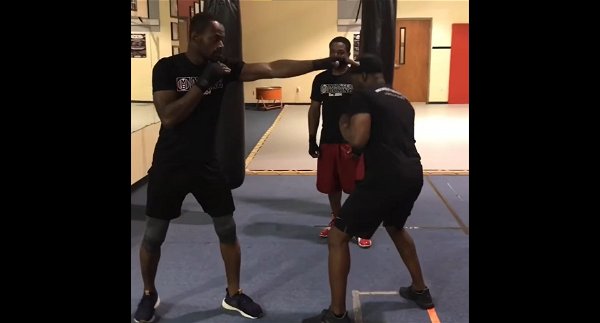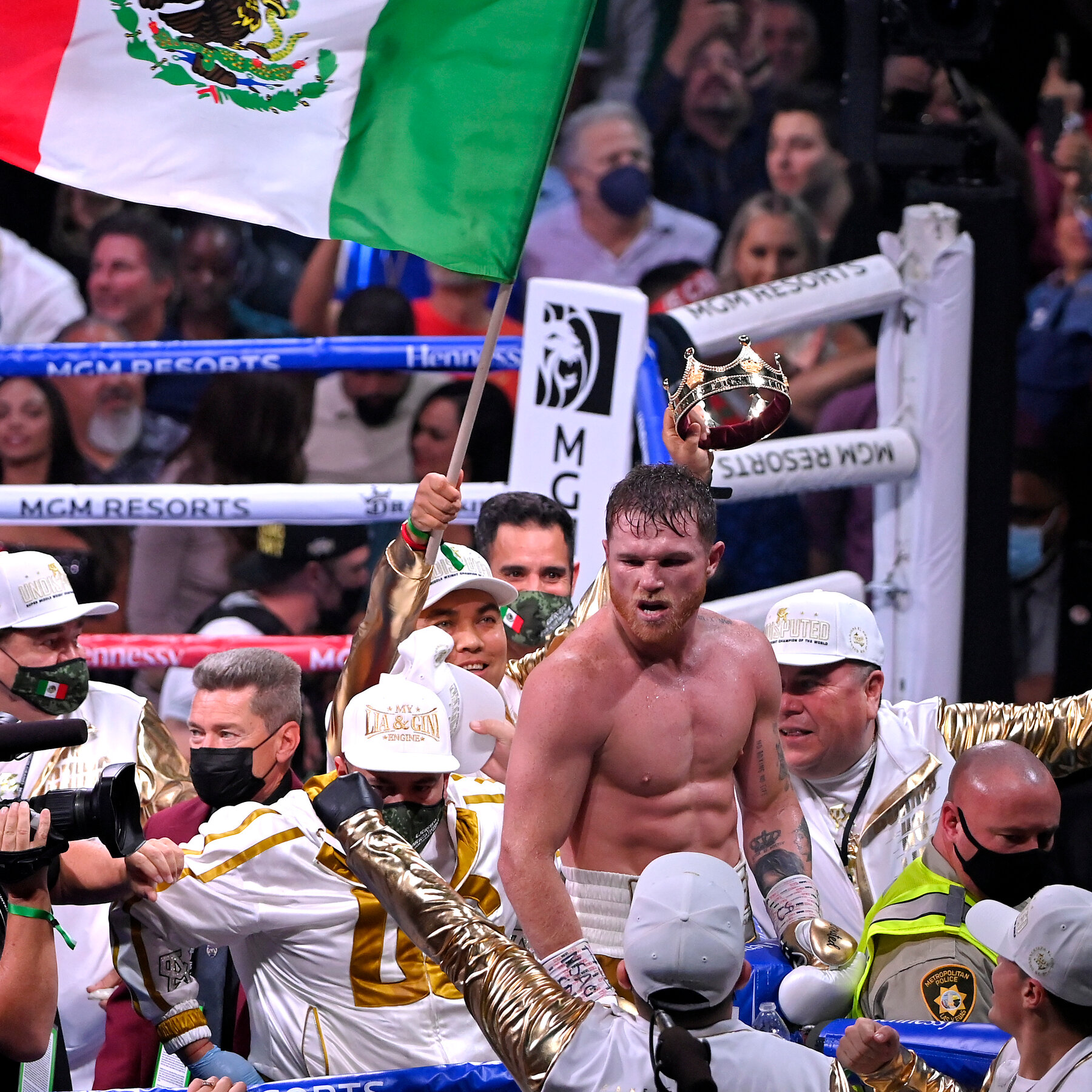The Art of Counterpunching in boxing involves skillfully using defensive techniques to launch effective counterattacks. In this guide, we will explore the strategies and principles behind this important aspect of boxing, providing insights on how to improve your counterpunching abilities and gain an advantage in the ring.
From understanding timing and distance to honing your reflexes and mastering defensive maneuvers, we’ll delve into the various elements that enable a boxer to effectively counterpunch. So, whether you’re a beginner looking to enhance your skills or an experienced fighter seeking to refine your technique, this comprehensive article will provide valuable tips and techniques to elevate your counterpunching game.
How Counterpunching Can Turn The Fight Around
Counterpunching is an art that can completely change the course of a boxing match. By executing well-timed counterpunches, fighters have the ability to shift the momentum in their favor and turn the fight around. These counterpunches are not just about power, but also about precision and timing. A successful counterpunch requires quick reflexes and an understanding of the opponent’s movements. By anticipating the opponent’s punches and countering with a well-placed strike, a fighter can disrupt their rhythm and gain the upper hand. This strategy requires a high level of skill and concentration, as one mistimed counterpunch can leave a fighter vulnerable to a counter-counterattack. In the world of boxing, mastering the art of counterpunching is essential for any fighter looking to become a true champion.

Credit: en.wikipedia.org
Master The Art Of Dodging And Evading
The art of counterpunching is an essential skill in boxing that every fighter should master. By effectively dodging and evading your opponent’s punches, you can create opportunities to counterattack and gain the upper hand in the fight. Footwork plays a crucial role in counterpunching, allowing you to move in and out of range quickly and efficiently. By constantly adjusting your position, you can make it difficult for your opponent to land clean shots. Head movement is another key aspect of counterpunching, as it allows you to slip and weave away from incoming punches while maintaining your balance and positioning. Utilizing techniques such as the slip, bob and weave, and shoulder roll can help you avoid your opponent’s punches and create openings for your own counterattacks. Mastering the art of dodging and evading is essential for any boxer looking to excel in the ring.
Developing Lightning-Quick Reflexes
The art of counterpunching in boxing is all about developing lightning-quick reflexes. One key aspect of improving your reflexes is enhancing your reaction time. This can be achieved through various training exercises and drills that focus on hand-eye coordination. By constantly challenging and pushing your reaction time limits, you can improve your ability to anticipate and counter your opponent’s punches effectively.
Hand-eye coordination is of utmost importance in counterpunching. It allows your eyes to quickly perceive the movements of your opponent, while your hands instinctively respond with well-timed counterpunches. Practicing exercises that improve your hand-eye coordination, such as speed bag workouts or shadow boxing, can significantly enhance your reflexes in the ring.
Strategies For Effective Counterpunching
The art of counterpunching in boxing relies on effective strategies that capitalize on opponent’s mistakes. By setting up counterpunch opportunities, fighters can gain a significant advantage in the ring. The key is to observe and anticipate the opponent’s movements, aiming to counter their punches with precision and speed.
When it comes to setting up counterpunch opportunities, it is crucial to maintain a strong defensive stance and keep a close eye on the opponent’s positioning. By staying patient and calculating, fighters can bait their opponents into making mistakes and leaving themselves open for counterpunches.
Timing is of the essence when executing a counterpunch. Waiting for the exact moment when the opponent commits to a strike increases the chances of a successful counter. As the opponent’s punch is launched, the fighter should quickly react by slipping, blocking, or parrying the incoming strike while simultaneously launching a counterpunch.
Effective counterpunching requires constant practice and a deep understanding of the opponent’s patterns and tendencies. By mastering the art of counterpunching, boxers can turn their opponents’ aggression into opportunities for victory.
Understanding Punch Patterns And Timing
The Art of Counterpunching in Boxing
Understanding Punch Patterns and Timing
Analyzing opponent’s habits and tendencies
Timing your counterpunches for maximum impact
Counterpunching is a crucial skill in boxing that requires a deep understanding of your opponent’s habits and tendencies. By carefully analyzing their movements and patterns, you can anticipate their next move and set yourself up for a powerful counterpunch. Timing is key in executing a successful counterpunch. It’s all about waiting for the right moment to strike, when your opponent is off balance or exposed. By being patient and observing their rhythm, you can maximize the impact of your counterpunch. Remember, every boxer has their own unique style, so it’s essential to adapt your counterpunching techniques accordingly. Mastering the art of counterpunching takes practice and experience, but when executed effectively, it can be a game-changer in the ring.
Perfecting The Counterpunch Technique
The key to the art of counterpunching in boxing lies in perfecting the counterpunch technique. To do this, it is crucial to focus on proper body positioning and balance. By maintaining a strong and stable stance, you are able to effectively execute counterpunches with precision. This involves keeping your feet shoulder-width apart, slightly bending your knees, and engaging your core muscles.
In addition to proper body positioning, generating power in your counterpunches is essential. This can be achieved by using your body weight and momentum to your advantage. As your opponent throws a punch, you can anticipate their movement and swiftly respond with a counterpunch, using the force of their punch against them.
By constantly practicing and refining your counterpunching technique, you can become a formidable boxer capable of catching your opponents off guard and turning the tide of the match in your favor.
Training Drills To Improve Counterpunching Skills
Shadow boxing exercises are an effective way to improve reflex development for counterpunching in boxing. By practicing these drills, fighters can enhance their ability to react quickly and accurately to their opponent’s movements.
One common shadow boxing exercise is to imagine an opponent throwing punches at you and responding with counterpunches. By visualizing different scenarios and practicing your counterpunching techniques repeatedly, you can train your mind and body to react instinctively.
Another training drill to improve counterpunching skills is partner drills. These drills simulate real fight scenarios and help boxers practice their timing and accuracy. Working with a partner, you can practice blocking, evading, and counterpunching in a controlled environment.
Overall, incorporating shadow boxing exercises and partner drills into your training routine can significantly enhance your counterpunching skills in boxing. Remember to focus on proper technique, speed, and accuracy to ensure maximum improvement.
Mental Preparation For Counterpunching
Mental preparation is crucial for effective counterpunching in boxing. Anticipating your opponent’s moves enables you to react quickly and strategically. Developing a counterpunching mindset involves staying focused, observing your opponent’s patterns, and analyzing their movements. By studying your opponent’s habits and tendencies, you can identify opportunities to strike back with precision and power. A strong counterpunching mindset allows you to stay one step ahead, constantly thinking and strategizing in the ring. It requires discipline and mental agility to assess the situation and seize the moment to counter. Adapting your tactics based on your opponent’s actions is key to achieving success in counterpunching. To excel in this art, maintaining a calm and composed state of mind while being ready to react swiftly is essential. So, remember to prepare mentally for counterpunching to maximize your chances of outmaneuvering and outperforming your opponent in the ring.
Studying Legendary Counterpunchers
The art of counterpunching in boxing is a crucial skill that separates legendary boxers from the rest. Studying the techniques of these counterpunching icons allows aspiring fighters to learn from their mastery. Analyzing the counterpunching styles of boxing legends helps in understanding the strategy behind their success. Emulating their techniques and strategies can help improve a fighter’s defensive and offensive skills, enabling them to effectively neutralize their opponent’s attacks while launching powerful counterattacks.
Counterpunching Tips From Experts
Counterpunching is a crucial skill in boxing that can give a fighter a significant advantage in the ring. To help you master this art, we have gathered insights from professional boxers and trainers to provide you with valuable tips.
One common mistake in counterpunching is telegraphing your moves. It is important to maintain a relaxed and unpredictable stance, avoiding any unnecessary movements that may give away your intentions. Additionally, timing is key to effective counterpunching. You need to anticipate your opponent’s punches and initiate your counter at the opportune moment, using their momentum against them.
Footwork and positioning are also crucial. Keep your feet shoulder-width apart and be light on your toes to maintain quick and agile movement. By staying balanced and using angles, you can effectively evade punches and create opportunities for counterattacks.
Furthermore, a strong defense is essential in counterpunching. Use your guard to protect your face and body while keeping your eyes focused on your opponent’s movements. Remember, a well-timed counterpunch can disrupt your opponent’s rhythm and give you the upper hand in a match.
In conclusion, mastering the art of counterpunching requires practice, focus, and discipline. By avoiding common mistakes and following these expert tips, you can enhance your skills and become a formidable counterpuncher in the ring.
Frequently Asked Questions Of The Art Of Counterpunching In Boxing
How Can I Improve My Counterpunching Skills In Boxing?
Practice counterpunching drills regularly with a focus on timing, footwork, and accuracy. Work with a coach to develop defensive techniques and analyze opponents’ patterns.
Why Is Counterpunching Important In Boxing?
Counterpunching allows you to capitalize on your opponent’s openings and defensive mistakes, gaining an advantage in the fight.
What Are Some Effective Counterpunching Techniques In Boxing?
Some effective counterpunching techniques include slipping and countering, parrying and countering, and using feints to draw out the opponent’s attacks.
How Does Counterpunching Differ From Regular Boxing Techniques?
Counterpunching involves preemptively reacting to an opponent’s attack and countering their blows, while regular boxing techniques focus on initiating and landing punches.
Can Counterpunching Be Used In Defensive Strategies?
Yes, counterpunching is a crucial aspect of defensive strategies in boxing, as it allows you to minimize damage while retaliating against your opponent’s attacks.
Conclusion
Counterpunching is an invaluable skill in the world of boxing, allowing fighters to gain a strategic advantage over their opponents. By mastering the art of counterpunching, boxers can effectively evade incoming punches while simultaneously delivering powerful, well-timed counters. This skill requires precision, timing, and a deep understanding of the opponent’s movements.
Effective counterpunching not only helps boxers avoid damage but also allows them to capitalize on their opponent’s mistakes, turning defense into offense. It is an art that requires constant practice and refinement, as every boxer has their own unique style and tendencies.
By incorporating counterpunching into their arsenal, fighters can increase their chances of victory and leave a lasting impact in the ring. So, the next time you step into the boxing gym, spend some time perfecting your counterpunching techniques, and watch as your skills soar to new heights.




